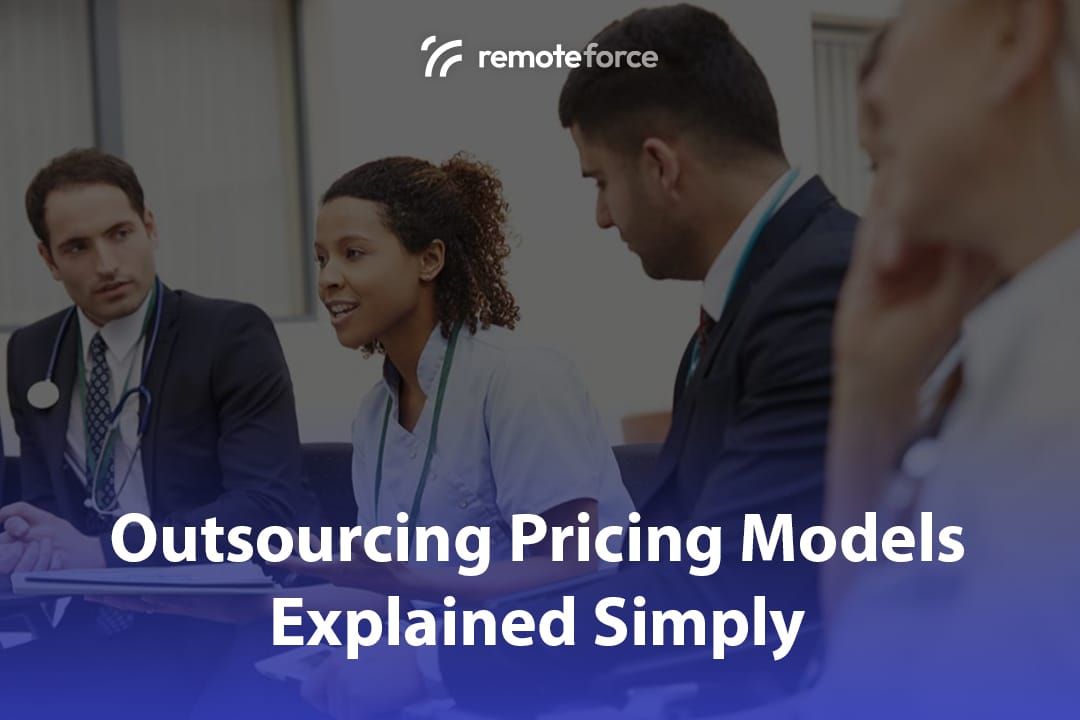Choosing to outsource manpower for critical functions like accounting, digital marketing, or app development is a strategic decision. However, the success of the partnership often hinges on selecting the correct financial arrangement. Understanding the different manpower outsourcing pricing models is essential for budget control, risk management, and ensuring you get the best value for the services delivered.
The ideal pricing model aligns the vendor’s compensation with your business objectives, encouraging performance and transparency. Here is a detailed breakdown of the most common pricing structures used in the outsourcing industry.
Table of Contents
ToggleManpower Outsourcing Pricing Models: Choose the Best Fit

Fixed Price Model (Project-Based)
The Fixed Price model is the simplest structure, where the client pays a predetermined, single fee for the entire project or a clearly defined scope of work.
How It Works
The vendor assesses the required effort, resources, and time needed to deliver a specific set of deliverables (e.g., launching a website, completing a legal audit, or setting up a new accounting system). They then quote a single, all-inclusive price.
| Best Suited For | RemoteForce Example |
|---|---|
| Projects with clear, finite scope and limited possibility of change (e.g., creating 10 graphic design assets, building a basic company website). | Outsourcing a short-term, clearly defined project like a 3-month digital advertising campaign setup. |
Advantages
- Predictable Budget: You know the exact cost upfront, making budgeting easy.
- Low Client Risk: The vendor absorbs the risk of time overruns or inefficiencies.
- Focus on Deliverables: The vendor is incentivized to complete the project quickly and efficiently to maximize profit.
Disadvantages
- Low Flexibility: Any significant change in scope (Scope Creep) requires formal negotiation and expensive change requests.
- Quality Pressure: If the scope was underestimated, the vendor might cut corners to meet the deadline and budget.
Time and Material (T&M) Model
The Time and Material model is highly flexible and involves the client paying based on the actual time spent by the outsourced manpower and the cost of materials used (which are usually software licenses or other direct expenses).
How It Works
The client pays an agreed-upon hourly or daily rate for each outsourced employee (e.g., a web developer billed at $X per hour) plus any pre-approved expenses. The rate covers salary, overhead, and the vendor’s profit margin.
| Best Suited For | RemoteForce Example |
|---|---|
| Long-term engagements, projects with evolving requirements, or when the scope is not fully defined at the outset. | Outsourcing a secretarial or legal assistant role where daily tasks and workload fluctuate, or ongoing app development. |
Advantages
- Maximum Flexibility: Easy to change requirements, add resources, or pivot direction quickly.
- Transparency: You know exactly how many hours are being billed by which personnel.
- Control: You have direct control over project priority and resource allocation.
Disadvantages
- Budget Risk: The total cost is not fixed and can exceed initial estimates if the project takes longer than planned.
- Monitoring Required: Requires diligent tracking of hours by the client to ensure efficiency.
Dedicated Team Model (or Cost-Plus)
In the Dedicated Team model, the client essentially leases a group of full-time, dedicated employees from the outsourcing vendor, often for long-term strategic projects.
How It Works
The client pays a fixed monthly fee that covers the salaries of the dedicated team members, plus a transparent, agreed-upon service fee or management fee charged by the outsourcing vendor. This model offers the most control, acting like an extension of your own company.
| Best Suited For | RemoteForce Example |
|---|---|
| Building a permanent, specialized offshore team, such as a full digital marketing department (SEO, PPC, Social Media) or a dedicated accounting/bookkeeping unit. | Establishing a long-term RPO (Recruitment Process Outsourcing) unit focused solely on your company’s continuous hiring needs. |
Advantages
- High Control and Integration: The team works exclusively for you, fully immersed in your culture and processes.
- Stability and Retention: Better long-term knowledge retention and easier communication flow.
- Cost Predictability: The monthly cost is fixed and highly predictable, offering the benefits of T&M flexibility but with better budget management.
Disadvantages
- Higher Minimum Cost: You pay for the team’s full capacity, regardless of temporary workload dips.
- Client Involvement: Requires significant management input and oversight from the client side.
Performance-Based or Value-Based Models
This less common but increasingly popular model directly links a portion of the vendor’s fee to the achievement of specific, measurable business outcomes.
How It Works
The total payment is structured with a Base Fee (Fixed or T&M) and a Success Bonus (Variable). If the outsourced team exceeds Key Performance Indicators (KPIs) specified in the Service Level Agreement (SLA), they receive the bonus.
| Best Suited For | RemoteForce Example |
|---|---|
| Functions where performance is directly measurable and impacts revenue/savings. | Outsourcing digital marketing where payment is partially linked to a percentage increase in qualified leads (KPI), or accounting services linked to on-time compliance with zero errors. |
Advantages
- Alignment of Interests: The vendor is highly motivated to drive results that benefit the client directly.
- Focus on Value: Payment is tied to business value, not just hours worked.
Disadvantages
- Complex to Define: Requires extremely clear, measurable, and auditable SLAs and KPIs.
- Risk of Manipulation: KPIs must be carefully designed to prevent unintended outcomes.
Choosing the Right Model for Your Needs
The decision ultimately depends on your project goals, tolerance for risk, and required level of control:
| Goal/Scenario | Recommended Model |
|---|---|
| High Budget Certainty & Fixed Scope | Fixed Price |
| Flexibility & Evolving Requirements | Time & Material (T&M) |
| Long-Term Strategic Partnership & Control | Dedicated Team |
| High Focus on Measurable Results (ROI) | Performance-Based |
Before signing any contract, businesses should perform due diligence to ensure the pricing model is transparent, legally sound, and includes clear termination clauses and intellectual property protection.
Conclusion
The right manpower outsourcing pricing model acts as a powerful lever for business efficiency and growth. It defines the rules of engagement and dictates how risks and rewards are shared. Whether you are outsourcing specialized, project-based work like graphic design or establishing a permanent back-office function like accounting support, selecting the best financial model ensures alignment between your strategic objectives and your partner’s incentives.
At RemoteForce, we offer flexible and transparent pricing structures—including Dedicated Team and T&M—to match your specific needs, whether you are scaling a web development team or need long-term legal secretarial support. We ensure complete legal compliance and clarity, so you can focus on leveraging your outsourced talent for maximum business impact.




